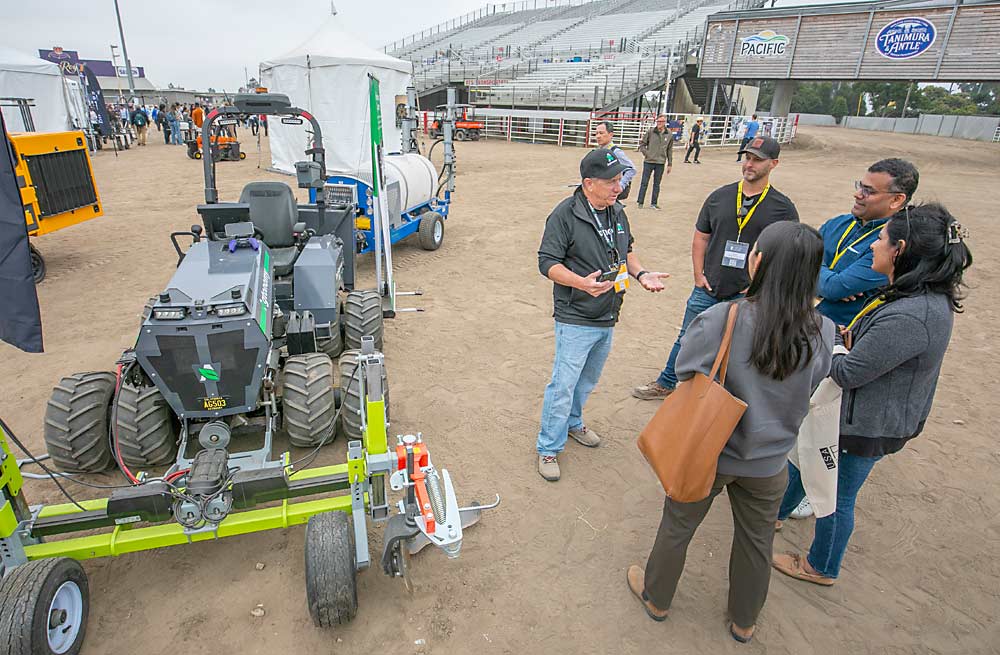
The apple industry offers opportunity for tech startups: labor needs, fruiting walls, a culture of collaboration. Growers also tout those factors to attract innovation.
No wonder companies at FIRA USA talked a lot about orchardists and what they want, even as few tree fruit growers actually attended the conference held in September during apple harvest.
Therein lies a potential disconnect between tech companies’ ideals of orchards and the automation challenges awaiting in growers’ blocks. More communication and collaboration between startups and growers should smooth that path toward adoption, several speakers said during the conference that put the spotlight on the emerging technology growers may want to get to know.
“I don’t think we’re engaging enough with our growers on this,” said Andrew Wulf of Driscoll’s during a panel about technology adoption.
Organizers estimated 2,000 people attended FIRA, the second-year specialty crop automation conference and trade show held in September in Salinas, California. Of those, 25 percent called themselves growers. Most of them produce strawberries or leafy greens, two of the area’s most prevalent crops.
About 60 exhibitors displayed everything from autonomous sprayers to laser weeders in the Salinas Sports Complex rodeo grounds. Bay Area startups dominated, but 30 countries were represented. One enterprise from India pitched a robotic cotton-sucking straw.
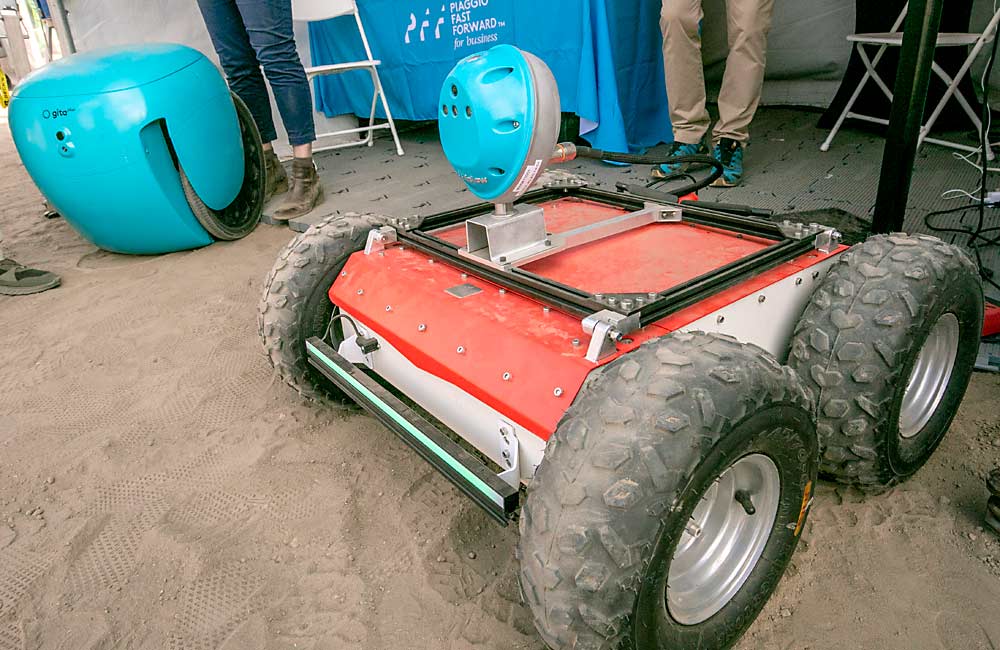
The trade show oozed the expected startup vibe, with words like “revolutionize” and “disrupt” being thrown around. Many companies have their sights on vegetables or hops, but some are courting tree fruit. One of the demonstration areas featured potted trees lined up to mimic orchard rows. The others were a simulated vineyard and a temporarily planted vegetable patch.
Not low-hanging fruit
Startups don’t target apples because they’re easy to automate. Of course, in fruit crops, “easy” is relative.
“I actually think that the tree fruit is easier than vineyards,” said Tim Bucher, CEO and founder of Agtonomy, a Bay Area startup that plans to demonstrate its driverless tractors in Washington next year. “They’re both very difficult, let’s just be honest.”
But, specialty fruit has several attractions.
For one, consumers — and thus, often, investors — care more about how an apple is produced than a box of corn flakes or even a head of lettuce, according to Walt Duflock, vice president of innovation for Western Growers, the organization that staged FIRA USA.
A history of collaboration strikes another chord.
Bluewhite, an Israeli company that sells Pathfinder retrofits to make tractors and their implements function autonomously, demonstrated at FIRA. The company is a frequent flyer at Washington tree fruit field days, where growers freely discuss their successes and failures with equipment.
“We like that everything is transparent,” said Ben Alfi, CEO and founder of Bluewhite. “We love being transparent with the growers, with the technology, with the capabilities, so everybody will join in together.”
Bluewhite, which bases its U.S. operations in Fresno, California, has a few kits operating in Washington but expects to reach 20 to 30 by the end of the year.
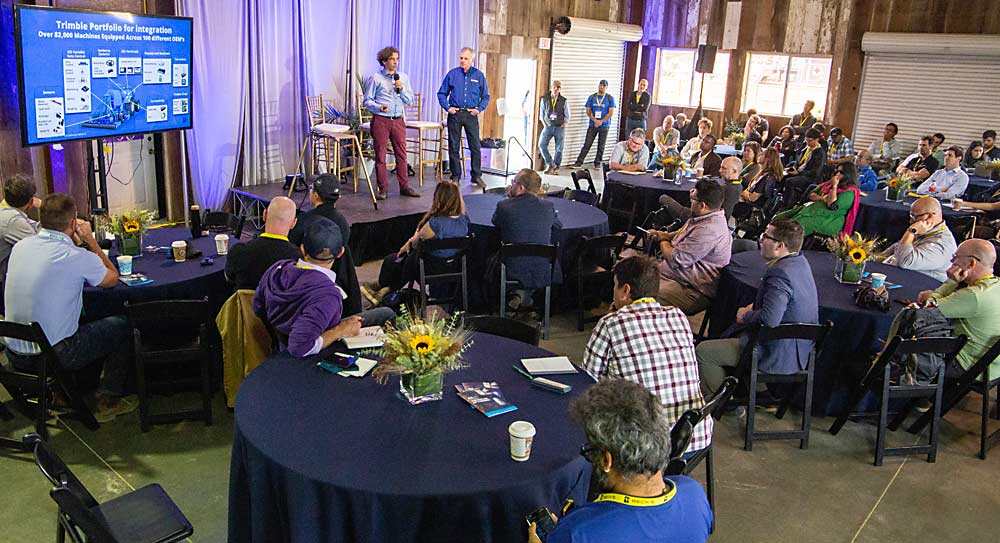
Startups often acknowledged the Washington Tree Fruit Research Commission for fostering that communication with companies.
Supported by grower assessments, the organization started more than 50 years ago with automation as one of its flagship mandates. Many of the current robotic harvester efforts receive commission funding. Just this year, the commission approved $25,000 out of cycle to reimburse growers who allow one of those robot startups, Tevel, to run trials, said Ines Hanrahan, executive director of the commission.
The commission is a FIRA sponsor and a founding member of the Western Growers Global Harvest Automation Initiative, started in 2021 with the goal of automating 50 percent of produce farming.
Apple opportunity
Apples were a natural fit for Robotics Plus, a New Zealand company that makes an automated hybrid diesel/electric farm vehicle that can ferry a sprayer or other implements, said CEO Steve Saunders.
As one of the founders of the Rockit apple brand, Saunders is aware of the industry’s labor needs, the collaboration culture and adoption of planar orchards both in Washington and New Zealand. Both regions also have vineyards, which have similar layouts with narrow rows and trellised fruit. That combination helps build scale.
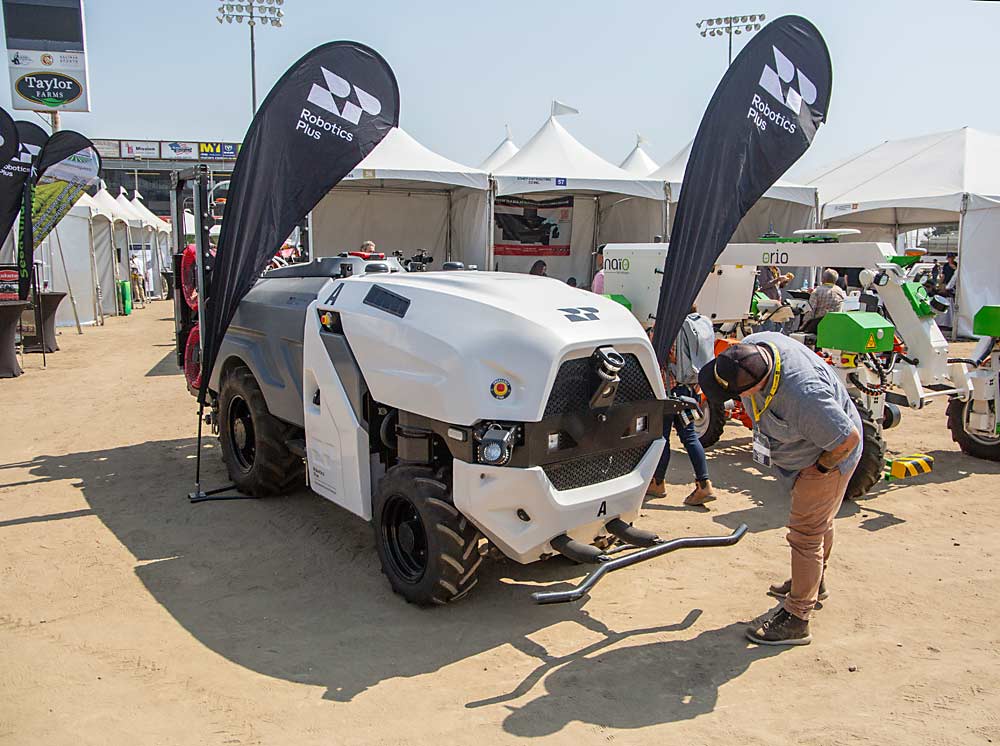
“We tried to find the crops that had some similarities that we could develop a vehicle that could be (used) across multiple crops, which could actually help us create that scale,” Saunders said.
Robotics Plus ran some demonstrations of its modular mobility tool in Washington this fall. The company currently has a few units operating commercially in New Zealand and Australia but expects 18 to be spraying fungicides in North American orchards in early spring 2024.
Meanwhile, Monarch has sold more than 250 self-driving-capable electric tractors to California vineyards and dairies, plus a few apple orchards, and had expected to deliver seven to Washington and Oregon farmers by the end of October. Tree fruit and berries are next, said Praveen Penmetsa, CEO of the California company. All those industries face the same high labor needs.
“The same tractor addresses all of those markets,” he said.
Also in October, the company announced a dealership agreement with Burrows Tractor of Yakima, Washington.
Making the most of a niche
Companies target tree fruit and other specialty crops today because row crops have been automated for decades, said Scott Jacky, director of orchard design and development for NWFM and a member of the research commission technology committee. The first wheat combine was patented in 1836.
Jacky was one of the few tree fruit representatives who attended FIRA.
Scale is still part of the problem, he said. The tree fruit industry seems big in Central Washington, where fruit-laden trucks dominate the highways, but it’s a drop in the bucket compared to row crops.
“It’s a big industry, but it’s just not that big,” Jacky said.
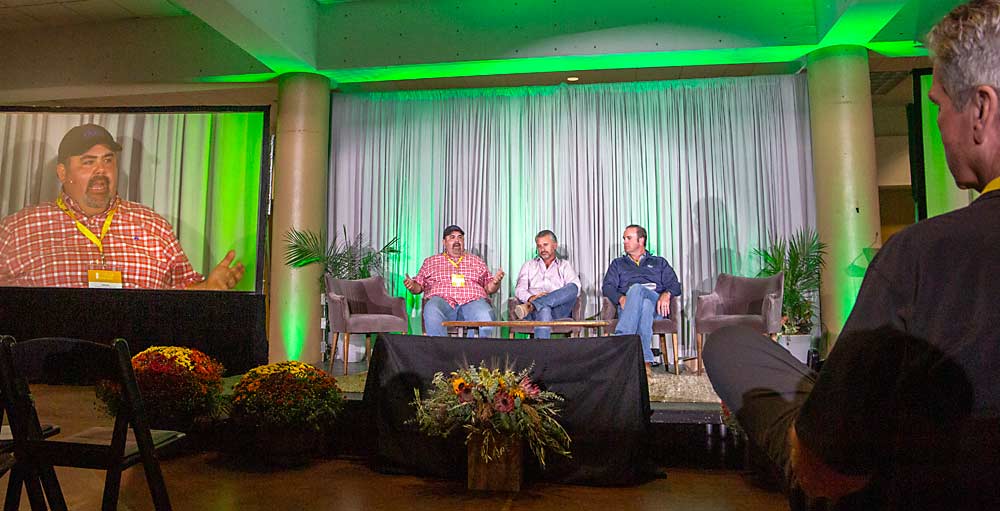
Western Growers is tackling that problem by uniting lettuce, berries, hops and nuts, as well as tree fruit, under its automation initiative. Jacky was part of a planning committee. The FIRA event is just one part of the plan.
NWFM, which manages many Central Washington farms, including orchards, is known for innovation trials and demos, but its only year-round automation investment so far is equipping four tractors with Bluewhite technology.
Jacky thought the Robotics Plus and Agtonomy tractors made sense for the tree fruit industry because of their small size and modular design. He especially liked the Robotics Plus hybrid power model, because he suspects batteries still can’t keep up with the rigors of tree fruit, especially in remote locations.
But automation is needed, and he’s glad there was progress on display at FIRA.
“I’m just rooting for all of them,” he said.
—by Ross Courtney

FIRA notebook
After a busy event, reporters often end up with a notebook packed full of interesting insights that didn’t find a home in the final article. In this case, we wanted to share a few more snippets of the FIRA conversation.
Redefining the customer
Communication with growers was a big FIRA topic, but some startups see a business model selling to the suppliers with whom growers already work.
For commercialization, Agtonomy plans to partner with equipment manufacturers to factory-fit tractors with automation tools. The company’s current prototypes are built on top of a Bobcat frame.
Bluewhite is also making some similar moves with manufacturers so that its retrofit kits can be installed as part of the original outfit.
Multifunction
Investors cautioned startups against trying to solve only harvest problems while ignoring other crop tasks.
Several companies at FIRA were a step ahead of them and are betting that multifunctionality will overcome the adoption hurdle, and a few growers noticed.
“I’m liking all the modular things,” said Thomas Leyva, manager of Caymus Vineyards in Napa Valley, California.
He pointed to a self-driving, flat, cart-like vehicle by farm-ng of Watsonville, California, designed to carry other implements, such as weeders. Robotics Plus, for another example, sells self-driving farm vehicles with spray tanks that can be removed so other implements can be attached, such as a leaf blower and hedger.
“We need it just as versatile as regular tractors,” he said.
Weeding leads the way
Vegetable tools dominated the FIRA grounds, especially those for weeding. Equipment from Carbon Robotics, Stout Industrial Technology’s laser machines and others were big hits.
Weeding has the highest market penetration rate among specialty crop automation functions, according to Western Growers’ surveys.
“If you looked five years ago, there were three weeders, now there’s 30,” said Bartley Walker, president of Pacific Ag Rentals. “You can zap it, you can shoot it, you can pull it, plug it, fire it. You can do anything to a weed right now.”
Matchmaking
With all the robotic tools coming on the market, growers understandably have trouble deciding which ones to try and which ones to buy.
It’s helpful to view those decisions on a continuum, said Rob Trice, founding partner of The Mixing Bowl, a company that connects innovators in food, ag and information technology. Try not to make the decisions all or nothing.
“This is an iterative matchmaking process. It’s kind of like dating, right?” he said.
—by Ross Courtney

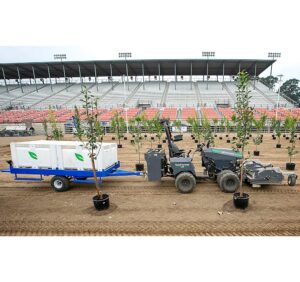





Leave A Comment